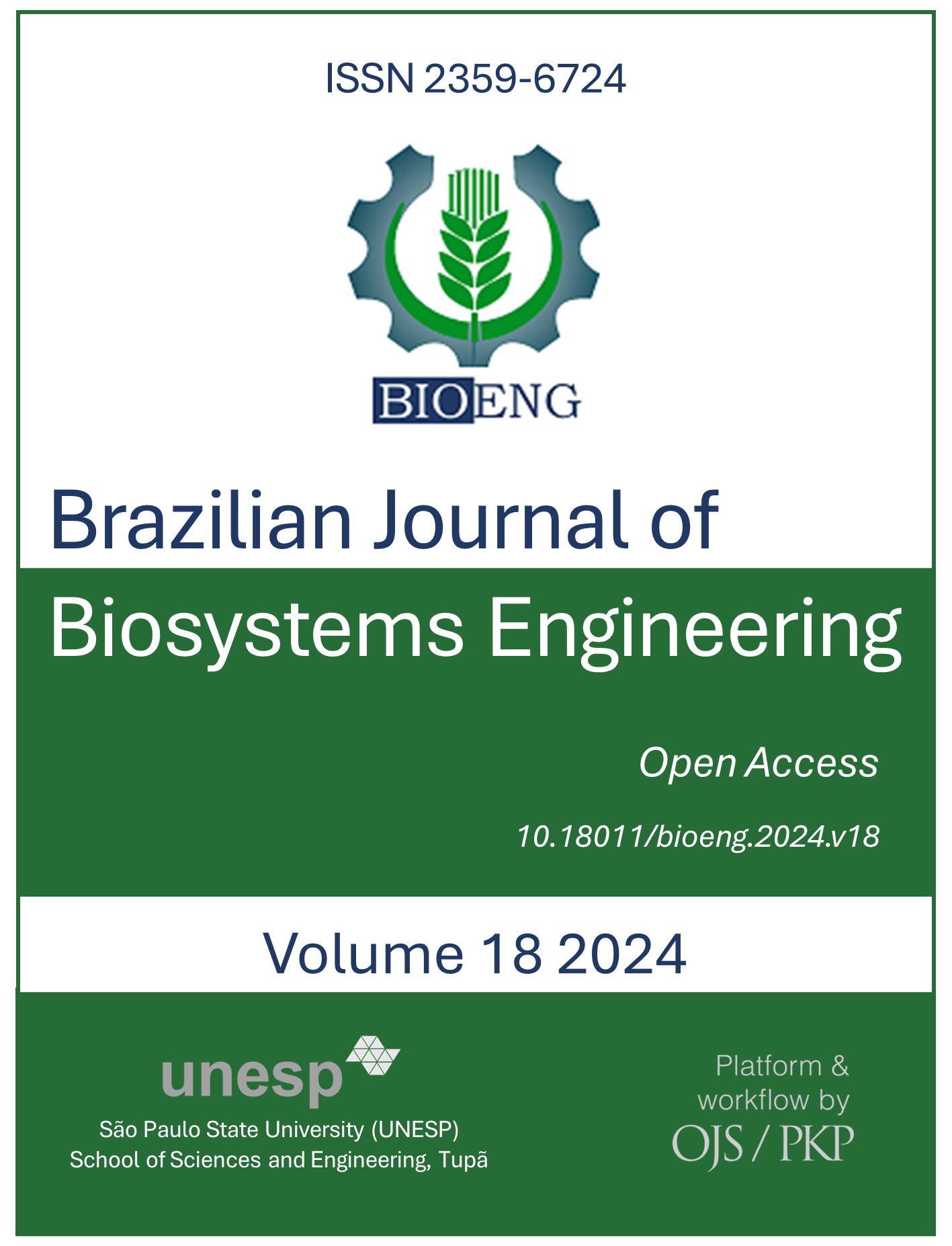Traceability in the cotton textile chain: from rural producer to end consumer
DOI:
https://doi.org/10.18011/bioeng.2024.v18.1244Keywords:
Traceability, Textile chain, Cotton, Adding Value, Supply chainAbstract
This study systematically reviews the literature on traceability in the cotton textile chain to investigate its scope in all chain links and its relationship with adding value to the product. The analysis included 31 articles published between 2014 and 2024, identified on the Scopus database. The results showed a significant emphasis on the Production and Industrialization links, with 87.1% of the articles focusing on these stages, while Retail and Consumer received limited attention. It was found that traceability adds value through transparency, sustainability, authenticity, and technological innovation, but lacks greater integration and communication in the final links. The study highlights the need for a holistic approach that aligns traceability practices with market demands for sustainability, trust, and social responsibility.
Downloads
References
Agrawal, T. K., Koehl, L., & Campagne, C. (2018). A secured tag for implementation of traceability in textile and clothing supply chain. The International Journal of Advanced Manufacturing Technology, 99(9), 2563-2577. https://doi.org/10.1007/s00170-018-2638-x DOI: https://doi.org/10.1007/s00170-018-2638-x
Agrawal, T. K., Kumar, V., Pal, R., Wang, L., & Chen, Y. (2021). Blockchain-based framework for supply chain traceability: A case example of textile and clothing industry. Computers & Industrial Engineering, 154, 107130. https://doi.org/10.1016/j.cie.2021.107130 DOI: https://doi.org/10.1016/j.cie.2021.107130
Agrawal, T. K., & Pal, R. (2019). Traceability in textile and clothing supply chains: classifying implementation factors and information sets via Delphi Study. Sustainability, 11(6), 1698. https://doi.org/10.3390/su11061698 DOI: https://doi.org/10.3390/su11061698
Ahmed, W. A. H. & Maccarthy, B. L. (2021). Blockchain-enabled supply chain traceability in the textile and apparel supply chain: a case study of the fiber producer, Lenzing. Sustainability, 13(19), 10496. https://doi.org/10.3390/su131910496 DOI: https://doi.org/10.3390/su131910496
Alves, L., Sá, M., Cruz, E. F., Alves, T., Alves, M., Oliveira, J., Santos, M., & Rosado da Cruz, A. M. (2024). A traceability platform for monitoring environmental and social sustainability in the textile and clothing value chain: towards a digital passport for textiles and clothing. Sustainability, 16(1), 82. https://doi.org/10.3390/su16010082. DOI: https://doi.org/10.3390/su16010082
Bullón Pérez, J. J., Queiruga-Dios, A., Gayoso Martínez, V., & Martín del Rey, Á. (2020). Traceability of ready-to-wear clothing through blockchain technology. Sustainability, 12(18), 7491. https://doi.org/10.3390/su12187491. DOI: https://doi.org/10.3390/su12187491
Canavari, M.; Centonze, R.; Hingley, M.; Spadoni, R. Traceability as part of competitive strategy in the fruit supply chain. British Food Journal, 112(2), 171-186, 2010. https://doi.org/10.1108/00070701011018851 . DOI: https://doi.org/10.1108/00070701011018851
Chen, J., Pei, L., Shi, W., Saleem, M. A., Jiao, C., Zhang, H., & Wang, J. (2024). Application of rare earth marking on anti-counterfeiting waterless/less-water dyeing technology. AATCC Journal of Research, 11(1), 3-11. https://doi.org/10.1177/24723444231206855 DOI: https://doi.org/10.1177/24723444231206855
Clarivate. Web of Science. Disponível em: https://clarivate.com/webofsciencegroup/solutions/web-of-science/ . Acesso em: 04 nov. 2024.
Creswell, J. W.& Creswell, J. D. Research design: qualitative, quantitative, and mixed methods approaches. 5. ed. Thousand Oaks: Sage, 2018.
Dominidiato, M., Guercini, S., Milanesi, M., & Tunisini, A. (2023). Supplier-customer relationships for sustainability-led innovation in the textile industry. Journal of Business & Industrial Marketing, 39(13), 15-26. https://doi.org/10.1108/JBIM-01-2023-0060 DOI: https://doi.org/10.1108/JBIM-01-2023-0060
Egels-Zandén, N., & Hansson, N. (2016). Supply chain transparency as a consumer or corporate tool: the case of Nudie Jeans Co. Journal of Consumer Policy, 39, 377-395. https://doi.org/10.1007/s10603-015-9283-7 . DOI: https://doi.org/10.1007/s10603-015-9283-7
Elsevier. Scopus. Disponível em: https://www.elsevier.com/solutions/scopus . Acesso em: 04 nov. 2024.
Foroughi, J., Safaei, F., Raad, R., & Mitew, T. (2020). Advances in Wearable Sensors: Signalling the Provenance of Garments Using Radio Frequency Watermarks. Sensors, 20(22), 6661. https://doi.org/10.3390/s20226661 DOI: https://doi.org/10.3390/s20226661
Fraser, E., & Van der Ven, H. (2022). Increasing transparency in global supply chains: The case of the fast fashion industry. Sustainability, 14(18), 11520. https://doi.org/10.3390/su141811520 DOI: https://doi.org/10.3390/su141811520
Gobbi, L., & Massa, I. (2015). Supply chain management in textile sector: the case of the Italian T-fashion traceability system. International Journal of Environment and Health, 7(4), 359-370. https://doi.org/10.1504/IJENVH.2015.077133 DOI: https://doi.org/10.1504/IJENVH.2015.077133
Griffin, T. W., Harris, K. D., Ward, J. K., Goeringer, P., & Richard, J. A. (2022). Three digital agriculture problems in cotton solved by distributed ledger technology. Applied Economic Perspectives and Policy, 44(1), 237-252. https://doi.org/10.1002/aepp.13142 . DOI: https://doi.org/10.1002/aepp.13142
Hader, M., Tchoffa, D., El Mhamedi, A., Ghodous, P., Dolgui, A., & Abouabdellah, A. (2022). Applying integrated Blockchain and Big Data technologies to improve supply chain traceability and information sharing in the textile sector. Journal of Industrial Information Integration, 28, 100345. https://doi.org/10.1016/j.jii.2022.100345 . DOI: https://doi.org/10.1016/j.jii.2022.100345
Hardin IV, R. G., Barnes, E. M., Delhom, C. D., Wanjura, J. D., & Ward, J. K. (2022). Internet of things: Cotton harvesting and processing. Computers and Electronics in Agriculture, 202, 107294. https://doi.org/10.1016/j.compag.2022.107294 . DOI: https://doi.org/10.1016/j.compag.2022.107294
Huang, J., Jiao, Q., Zhang, Y., Xu, G., Wang, L., & Yue, D. (2024). Fabric tearing performance state perception and classification driven by multi-source data. Plos one, 19(4), e0302037. https://doi.org/10.1371/journal.pone.0302037 . DOI: https://doi.org/10.1371/journal.pone.0302037
Kubler, Sylvain et al. Group fuzzy AHP approach to embed relevant data on “communicating material.” Computers in Industry, v. 65, n. 6, p. 675-692, 2014. DOI: https://doi.org/10.1016/j.compind.2014.01.018
Kumar, V., Koehl, L., & Zeng, X. (2016). A fully yarn integrated tag for tracking the international textile supply chain. Journal of Manufacturing Systems, 40, 76-86. https://doi.org/10.1016/j.jmsy.2016.06.007 . DOI: https://doi.org/10.1016/j.jmsy.2016.06.007
Kumar, V., Ekwall, D., & Wang, L. (2016). Supply chain strategies for quality inspection under a customer return policy: A game theoretical approach. Entropy, 18(12), 440. https://doi.org/10.3390/e18120440 . DOI: https://doi.org/10.3390/e18120440
Kumar, V., Hallqvist, C., & Ekwall, D. (2017). Developing a framework for traceability implementation in the textile supply chain. Systems, 5(2), 33. https://doi.org/10.3390/systems5020033 . DOI: https://doi.org/10.3390/systems5020033
Kumar, V., Koehl, L., Zeng, X., & Ekwall, D. (2017). Coded yarn based tag for tracking textile supply chain. Journal of Manufacturing Systems, 42, 124-139. https://doi.org/10.1016/j.jmsy.2016.11.008 . DOI: https://doi.org/10.1016/j.jmsy.2016.11.008
Liang, H., & Zhang, L. (2024). Study on the quality characteristics and origin traceability of cotton in the Aksu, Xinjiang. Journal of Natural Fibers, 21(1), 2311298. https://doi.org/10.1080/15440478.2024.2311298 . DOI: https://doi.org/10.1080/15440478.2024.2311298
Mao, Y., Jiao, Q., Qian, Z., Wang, C., & Sun, T. (2024). multi-source data-driven framework for work state classification in fabric pilling and linting performance assessment. IEEE Access. https://doi.org/10.1109/ACCESS.2024.3431093 . DOI: https://doi.org/10.1109/ACCESS.2024.3431093
McNeill, L. S., Potdar, B., & McQueen, R. H. (2023). Prioritising sustainable garment choice among high-volume fashion consumers. Journal of Fashion Marketing and Management: An International Journal, (ahead-of-print).. DOI: https://doi.org/10.1108/JFMM-11-2022-0229
Munir, M. A., Habib, M. S., Hussain, A., Shahbaz, M. A., Qamar, A., Masood, T., ... & Salman, C. A. (2022). Blockchain adoption for sustainable supply chain management: Economic, environmental, and social perspectives. Frontiers in Energy Research, 10, 899632. https://doi.org/10.3389/fenrg.2022.899632 . DOI: https://doi.org/10.3389/fenrg.2022.899632
Oliveira, Jean. C.; Pinotti, M. Augusto & Lopo, W. N. (2017) Evaluation of the implementation of RFID technology in the sector of processing of a textile industry. Revista Espacios, 38(17), 17. http://w.revistaespacios.com/a17v38n17/a17v38n17p17.pdf
Ospital, P., Masson, D., Beler, C., & Legardeur, J. (2023). Toward product transparency: communicating traceability information to consumers. International Journal of Fashion Design, Technology and Education, 16(2), 186-197. https://doi.org/10.1080/17543266.2022.2142677 . DOI: https://doi.org/10.1080/17543266.2022.2142677
Porter, M E. Competitive advantage: creating and sustaining superior performance. New York: Free Press, 1985.
Tolentino-Zondervan, F., & DiVito, L. (2024). Sustainability performance of Dutch firms and the role of digitalization: the case of textile and apparel industry. Journal of Cleaner Production, 459, 142573. DOI: https://doi.org/10.1016/j.jclepro.2024.142573
Wang, K., Kumar, V., Zeng, X., Koehl, L., Tao, X., & Chen, Y. (2019). Development of a textile coding tag for the traceability in textile supply chain by using pattern recognition and robust deep learning. International Journal of Computational Intelligence Systems, 12(2), 713-722. https://doi.org/10.2991/ijcis.d.190704.002 . DOI: https://doi.org/10.2991/ijcis.d.190704.002
Wang, L., Sun, W., Zhao, J., Zhang, X., Lu, C., & Luo, H. (2024). A non-fungible token and blockchain-based cotton lint traceability solution. Applied Sciences, 14(4), 1610. https://doi.org/10.3390/app14041610 . DOI: https://doi.org/10.3390/app14041610
Yin, R. K. Pesquisa qualitativa do início ao fim. 2. ed. Porto Alegre: Penso, 2022.
Zeithaml, V. A. (1988). Consumer perceptions of price, quality, and value: a means-end model and synthesis of evidence. Journal of Marketing, 52(3), 2-22. https://doi.org/10.1177/002224298805200302 . DOI: https://doi.org/10.1177/002224298805200302
Downloads
Published
How to Cite
Issue
Section
License
Copyright (c) 2024 The Authors

This work is licensed under a Creative Commons Attribution 4.0 International License.
By publishing in this journal, authors agree to the following terms:
a) Authors retain copyright and grant the journal the right of first publication. The work is simultaneously licensed under the Creative Commons Attribution License, which permits sharing and adaptation of the work with appropriate credit to the authors and the journal.
b) Authors may enter into separate, additional agreements for non-exclusive distribution of the published version of the work (e.g., posting to an institutional repository or inclusion in a book), provided that proper credit is given to the original publication in this journal.










